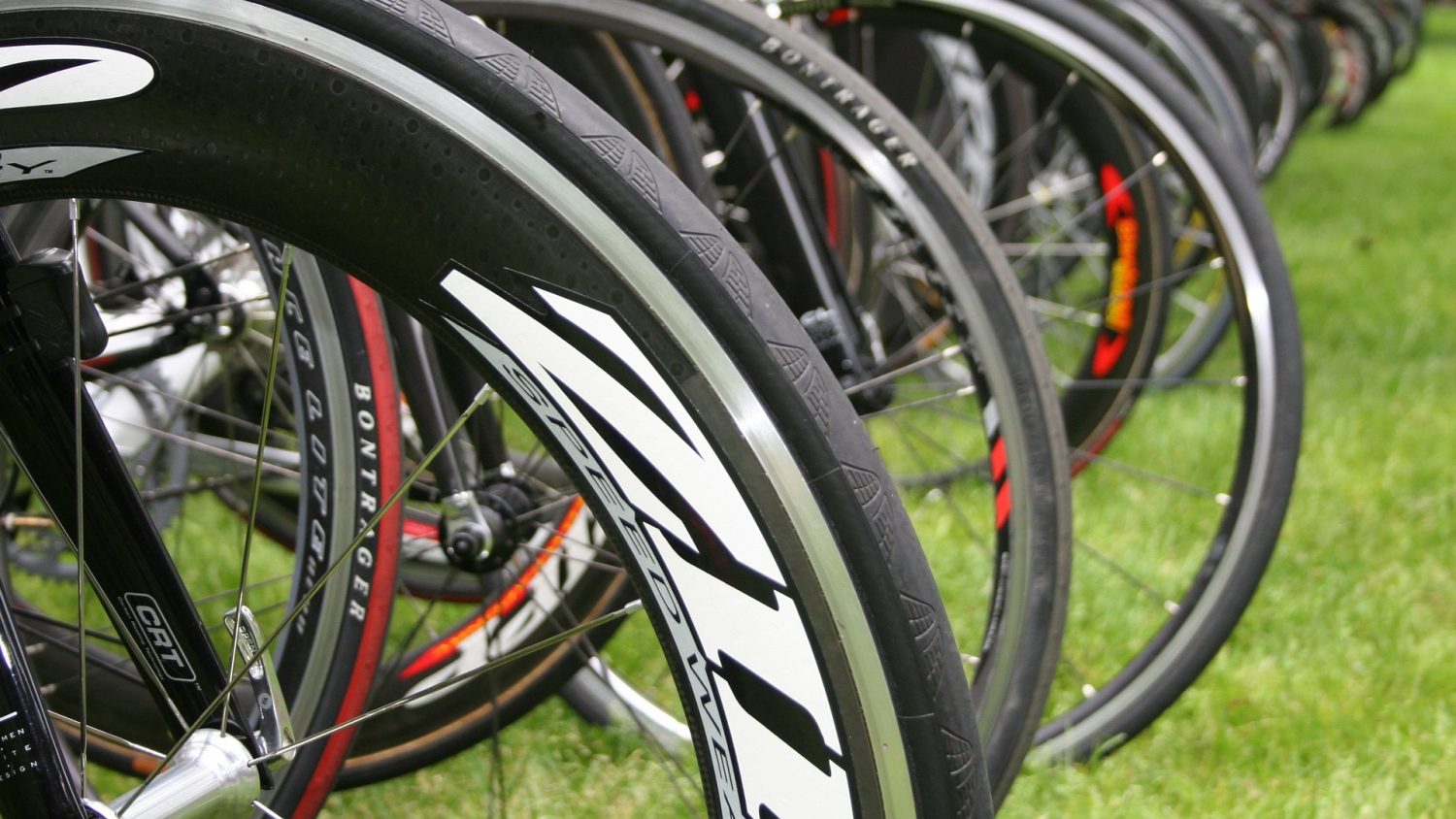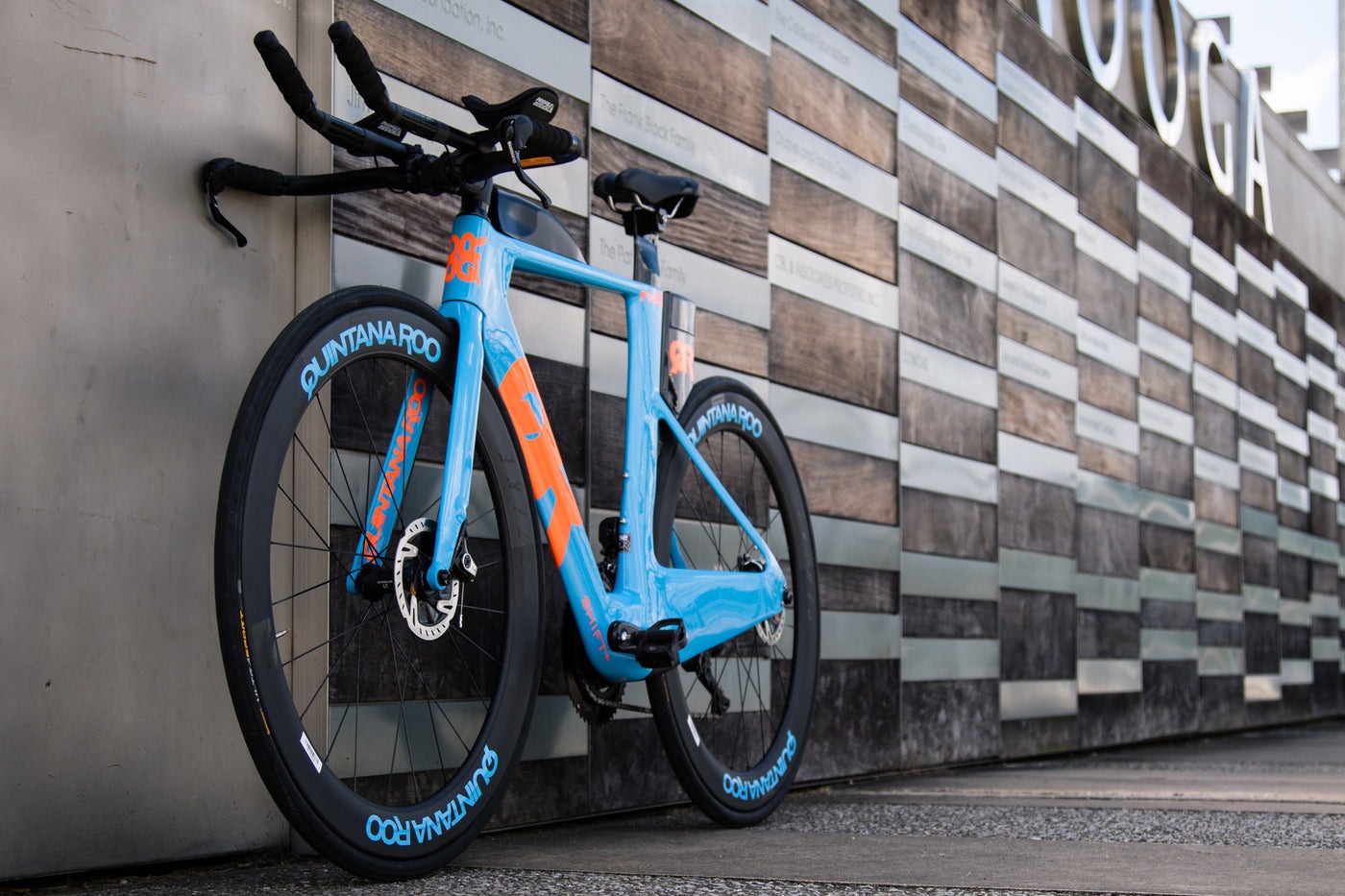Home>Misc>Featured>Triathlon: When Should You Replace Bike Tires


Featured
Triathlon: When Should You Replace Bike Tires
Published: September 16, 2023
Discover when it's time to replace your bike tires for a better triathlon performance. Read our featured guide to optimize your cycling experience.
Introduction
As a triathlete, your bike is one of the most important pieces of equipment in your arsenal. It allows you to cover vast distances on the road, transitioning seamlessly between swimming and running. However, to ensure optimal performance and safety, it is crucial to regularly assess the condition of your bike tires and replace them when necessary.
When it comes to bike tires, there are a few telltale signs that indicate they may need replacement. These signs include visible wear and tear, reduced grip, frequent punctures, and an increase in rolling resistance. Ignoring these signs can not only compromise your performance but also put you at risk of accidents and injuries.
However, deciding when to replace your bike tires is not always straightforward. There are various factors that need to be taken into consideration, such as tire type, riding conditions, and personal preference. In this article, we will explore the different signs of wear on bike tires, factors to consider when replacing them, and provide tips on how to prolong their lifespan.
Furthermore, as a triathlete, it is essential to understand the frequency at which bike tires should be replaced specifically for triathlon events. Given the demanding nature of triathlons, where athletes push their limits in multiple disciplines, tire maintenance becomes even more crucial.
By understanding when to replace your bike tires and how to maintain them properly, you can optimize your performance, enhance your safety, and prolong the lifespan of your bike tires.
Signs of wear on bike tires
Regularly inspecting your bike tires is essential to ensure they are in optimal condition. Here are some common signs of wear that indicate it may be time for a tire replacement:
- Tread wear: One of the most obvious signs of tire wear is the deterioration of the tread pattern. As the tire accumulates miles, the tread will gradually wear down, affecting its grip and traction on different surfaces. Look for uneven wear patterns and significant loss of tread depth.
- Cuts and punctures: As you ride, your tires are constantly exposed to road debris such as glass, stones, and sharp objects. Inspect your tires for any cuts, punctures, or embedded foreign objects that could compromise their integrity or lead to punctures. Even small cuts can eventually grow and cause unexpected flats.
- Cracked sidewalls: If you notice any cracks or splits on the sidewalls of your tires, it’s a clear sign of aging and degradation. The sidewall is crucial for maintaining the structural integrity of the tire, and any damage to it can increase the risk of blowouts or sudden tire failure.
- Loss of pressure: If you find yourself frequently needing to pump up your tires, it could be an indication of small leaks or porousness in the tire material. Over time, this can be exacerbated and result in constant pressure loss, impacting your ride quality and increasing the risk of flats.
- Increased rolling resistance: As tires wear out, their rolling resistance tends to increase. If you notice that it’s becoming harder to maintain your usual speed or if you feel like you’re working harder to maintain your pace, it may be due to worn-out tires. This can be particularly noticeable when climbing hills or pushing for higher speeds.
It’s important to keep in mind that these signs of wear may vary depending on the type of tire and the riding conditions. Additionally, individual preferences and tolerances for wear and tear may differ. However, if you observe any of these signs on your bike tires, it’s a good indication that it’s time for a replacement.
Factors to consider when replacing bike tires
When it comes to replacing bike tires, there are several factors that you should take into consideration to ensure you make the right choice:
- Tire type: The type of tire you choose will depend on your specific needs and riding style. There are different types, including clinchers, tubulars, and tubeless tires. Each type has its own advantages and disadvantages in terms of performance, durability, and ease of maintenance. Consider your riding goals and preferences when selecting the appropriate tire type.
- Riding conditions: Assess the typical conditions in which you ride. Are you primarily on roads, trails, or a mix of both? The type of surface you ride on can influence the durability and grip requirements of your tires. For rougher terrains, tires with higher puncture resistance and wider profiles may be more suitable.
- Tire width: The width of your tires can impact your ride quality and performance. Wider tires offer better stability, improved comfort, and enhanced traction, especially on uneven or slippery surfaces. However, they may also increase rolling resistance. Consider the trade-offs between width and performance based on your riding style and preferences.
- Weight: The weight of your tires can influence your overall bike weight as well as your responsiveness and acceleration. Lighter tires can provide a more agile and responsive ride, but they may sacrifice some durability. Heavier tires, on the other hand, can offer increased puncture resistance and durability but may feel less nimble.
- Budget: Affordability is an important factor for many cyclists. Consider the price range that fits your budget and look for tires that offer a good balance between cost and performance. Keep in mind that higher-quality tires may have a higher upfront cost but can provide better longevity and performance in the long run.
- Manufacturer reputation: Check the reputation and reviews of different tire manufacturers. Look for brands with a track record of producing high-quality and reliable tires. This can help you make an informed decision and ensure that you are investing in a reputable product.
By considering these factors, you can narrow down your options and choose the most suitable replacement tires for your bike. Don’t hesitate to reach out to a local bike shop or consult fellow cyclists for recommendations based on your specific needs and preferences.
Frequency of tire replacement for triathlon
When participating in triathlons, the frequency of tire replacement may vary depending on several factors. Here are some considerations to keep in mind when determining when to replace your bike tires for triathlon events:
- Mileage: The number of miles you have ridden on your tires plays a significant role in determining their lifespan. As a general guideline, most bike tires have a recommended mileage range, typically between 2,000 and 5,000 miles. However, this can vary based on the tire type, road conditions, and riding style. Regularly monitor your mileage and keep track of when you installed your tires to get a sense of when they may need replacement.
- Race calendar: If you have an upcoming triathlon event, it’s essential to assess the condition of your tires well in advance. Consider the distance and terrain of the race and ensure your tires are in optimal condition to handle the specific challenges. If your tires are close to their recommended replacement mileage, it may be a good idea to replace them before the event to avoid any unexpected issues on race day.
- Training intensity: Triathlon training involves consistent cycling to build endurance and improve performance. The more frequently you train and the higher the intensity of your workouts, the faster your tires may wear out. Pay close attention to signs of wear and tear, especially if you’re putting in long training hours or regularly pushing for higher speeds.
- Riding conditions: Triathlons often take place in various locations and can involve different road surfaces. If you train in areas with rough roads, gravel paths, or other challenging conditions, your tires may experience faster wear and require more frequent replacements. Assess the conditions you regularly ride in and adjust your tire replacement schedule accordingly.
- Personal preference: Each triathlete has different preferences and tolerance levels for worn-out tires. Some athletes may prefer to replace their tires more frequently to ensure consistent performance and reduce the risk of flats, while others may be more comfortable pushing the limits of tire wear. Consider your personal comfort level and prioritize your safety and performance when determining when to replace your tires.
It’s important to note that these guidelines are not set in stone, and the frequency of tire replacement may vary for each individual. Regularly inspect your tires, pay attention to any signs of wear or damage, and consider the specific demands of your training and race calendar. When in doubt, consult with a trusted bike mechanic or experienced triathletes for personalized advice.
Tips for prolonging the lifespan of bike tires
Proper maintenance and care can help extend the lifespan of your bike tires. Here are some tips to keep your tires in optimal condition for a longer period of time:
- Regularly clean your tires: After each ride, take the time to clean your tires to remove any dirt, debris, or road grime. Use a mild soap and water solution, along with a soft brush or sponge, to gently clean the tread and sidewalls. This will help prevent the accumulation of contaminants that can deteriorate the tire rubber and decrease its lifespan.
- Maintain proper tire pressure: Check your tire pressure regularly and inflate them to the recommended level. Riding with underinflated or overinflated tires not only affects the performance and handling of your bike but also puts more stress on the tires, leading to faster wear and potential damage. Refer to the sidewall of your tires for the recommended tire pressure range.
- Inspect for cuts and debris: Before and after each ride, inspect your tires for cuts, punctures, or embedded debris. Remove any small shards of glass, stones, or other foreign objects lodged in the tires that could cause flats or lead to further damage. Additionally, keeping an eye out for any cuts or wear marks early on can help prevent bigger issues down the road.
- Rotate your tires: If your bike allows for it, consider rotating your tires regularly. This involves swapping the front tire with the rear tire to distribute the wear more evenly. Since the front tire tends to wear faster due to added braking force, rotating them can help extend overall tire lifespan.
- Invest in puncture protection: Triathletes often face various road hazards that can increase the risk of punctures. Consider using tires with puncture-resistant features, such as reinforced sidewalls or additional layers of protection. This can help minimize punctures and extend the lifespan of your tires.
- Avoid excessive braking: Frequent and hard braking can cause increased wear on your tires, particularly the front tire. Try to anticipate and smoothly apply your brakes, rather than relying on sudden and forceful stops. This can help reduce unnecessary stress on the tires and prolong their lifespan.
- Store your bike properly: When not in use, store your bike in a cool, dry place away from direct sunlight and extreme temperatures. Excessive heat and prolonged exposure to UV rays can degrade the rubber compounds in your tires over time. Additionally, hanging your bike or using proper tire stands can prevent unnecessary strain on the tires.
By following these tips and practicing good tire maintenance habits, you can significantly prolong the lifespan of your bike tires. Regular inspections, cleaning, and proper tire pressure can help ensure your tires remain in good condition, providing you with a smooth and safe ride throughout your training and triathlon events.
Conclusion
Your bike tires play a crucial role in your triathlon performance and safety. Regularly assessing the condition of your tires and replacing them when necessary is essential for optimal performance and to reduce the risk of accidents and flats. Signs of wear such as tread wear, cuts and punctures, cracked sidewalls, loss of pressure, and increased rolling resistance indicate it may be time for a replacement.
When considering replacing your bike tires, take into account factors such as tire type, riding conditions, tire width, weight, budget, and the reputation of the manufacturer. Understanding these factors will help you make an informed decision and choose the most suitable tires for your needs.
For triathlon events, the frequency of tire replacement may vary depending on mileage, race calendar, training intensity, riding conditions, and personal preference. Regular tire inspections and keeping an eye on signs of wear will help you determine the best time for a replacement, ensuring your tires are in optimal condition come race day.
To prolong the lifespan of your bike tires, follow these tips: regularly clean your tires, maintain proper tire pressure, inspect for cuts and debris, rotate your tires if possible, invest in puncture protection, avoid excessive braking, and store your bike properly.
By taking these measures, you can extend the lifespan of your bike tires, maximize their performance, and enjoy a smooth and safe triathlon experience.









